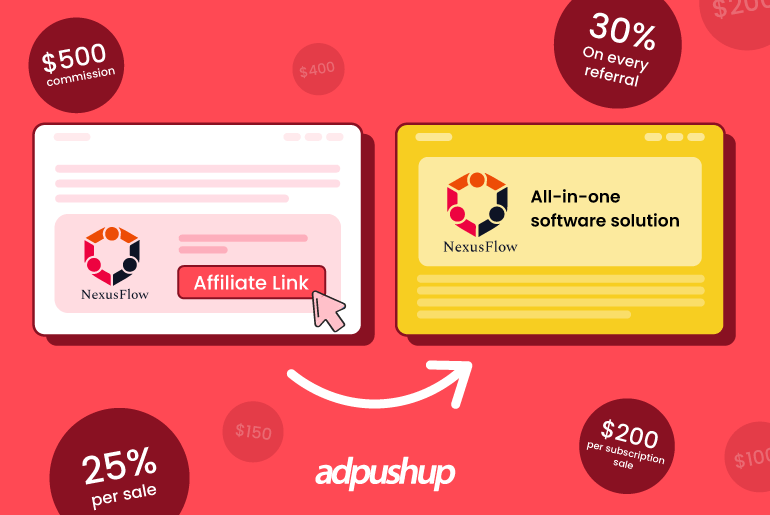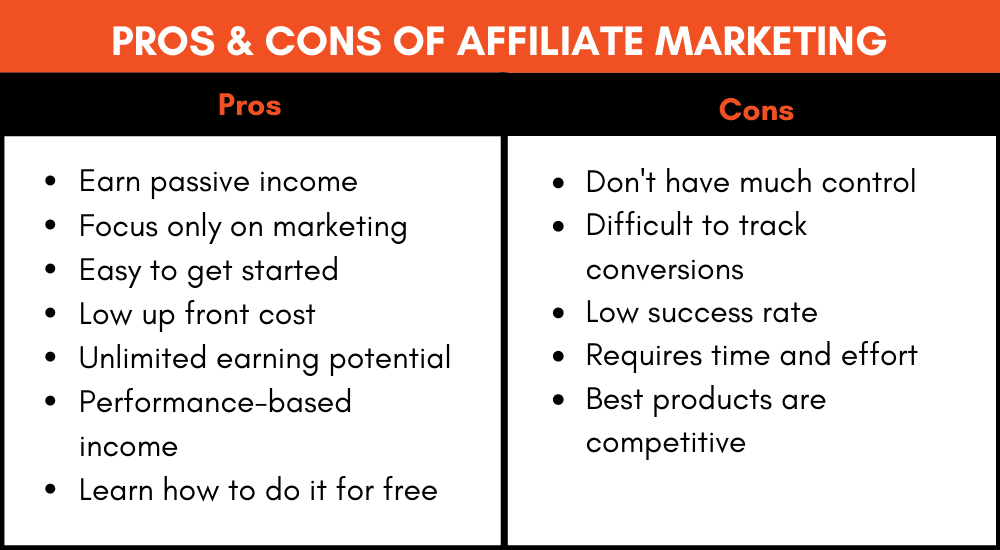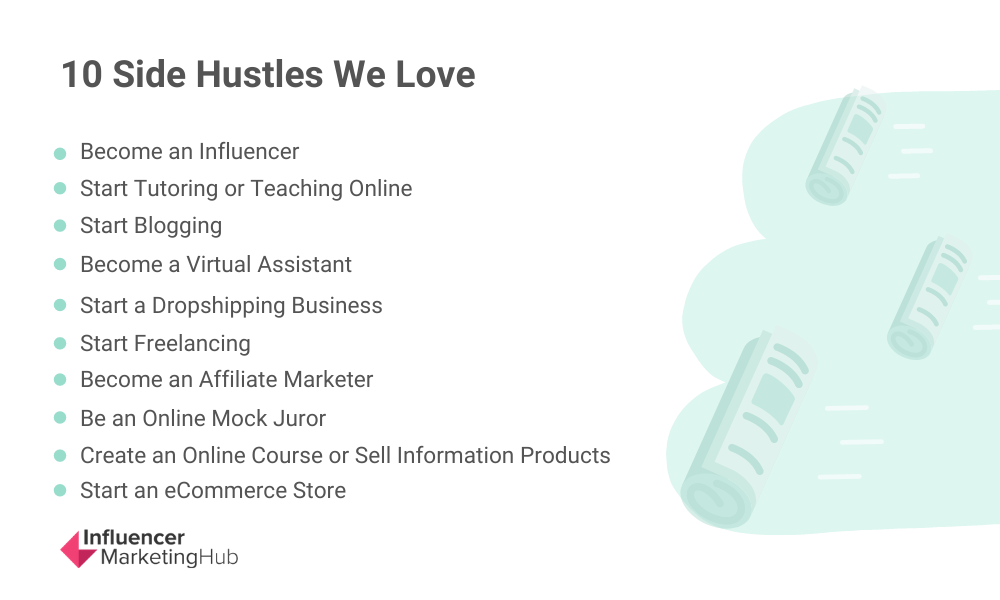Ideal Passive Incomes:
Affiliate Marketing, Tips, Advice And Reviews

Table of Contents
ToggleDropshipping Vs Affiliate Marketing : Which Do You Choose?
Have you ever wondered about the differences between dropshipping and affiliate marketing? It’s a topic that many aspiring online entrepreneurs are curious about. In this article, we’ll explore the nuances of both dropshipping and affiliate marketing. Whether you’re looking to start a new online business or simply wanting to understand the differences between these two popular business models, you’re in the right place!
When it comes to dropshipping, one of the main advantages is that you don’t need to have your own inventory. Instead, you partner with a supplier who handles the product storage, packaging, and shipping. This means you can focus on marketing and customer acquisition. On the other hand, affiliate marketing involves promoting other people’s products or services through a unique affiliate link. When someone makes a purchase through your link, you earn a commission. It’s essentially a referral-based business model. Throughout this article, we’ll dive deeper into the pros and cons of both dropshipping and affiliate marketing, so stay tuned to learn more!
Dropshipping Vs Affiliate Marketing
Dropshipping and affiliate marketing are two popular business models that allow individuals to earn money online. While both methods involve selling products, they differ significantly in terms of the responsibilities and risks involved. In this article, we will explore the definitions, working mechanisms, advantages, and disadvantages of both dropshipping and affiliate marketing. We will also compare the two models across various aspects such as business model, investment and costs, product selection and inventory, customer support and relationships, profit margins, flexibility, and scalability. By the end of this article, you will have a better understanding of which model may be suitable for you or your business.
What is Dropshipping?
Definition of Dropshipping
Dropshipping is a retail fulfillment method where an online store doesn’t keep the products it sells in stock. Instead, when a store sells a product, it purchases the item from a third party and has it shipped directly to the customer. In other words, the store acts as a middleman, connecting the customer with the supplier or manufacturer. This means that the store does not have to handle the products physically, and the fulfillment and shipping processes are taken care of by the supplier.
How Dropshipping Works
The dropshipping process is quite straightforward. The retailer (or dropshipper) sets up an online store and lists products from suppliers or manufacturers. When a customer places an order on the retailer’s website, the store then transfers the order details to the supplier or manufacturer. The supplier is responsible for packaging and shipping the product directly to the customer. The retailer earns a profit by marking up the price of the product.
Advantages of Dropshipping
One of the main advantages of dropshipping is that it eliminates the need for inventory management and warehousing. As the retailer does not physically handle the products, there is no need to invest in a large stock of inventory. This significantly reduces the upfront costs and risks associated with traditional retail.
Dropshipping also offers a variety of product options. Since the retailer does not have to purchase products upfront, they can easily test different products and niches without incurring any financial burden. This allows for a more flexible and adaptable business strategy.
Disadvantages of Dropshipping
While dropshipping offers many advantages, it also has its drawbacks. One of the main challenges is the lack of control over the fulfillment process. Since the retailer relies on suppliers for packaging and shipping, any errors or delays in the fulfillment process can directly impact the customer experience. This can lead to negative reviews and a damaged reputation.
Additionally, dropshipping often faces intense competition. Since the barriers to entry are low, many individuals and businesses choose to start dropshipping stores. This can make it harder to stand out in the market and generate consistent sales.
What is Affiliate Marketing?
Definition of Affiliate Marketing
Affiliate marketing is a performance-based marketing model where individuals (affiliates) earn a commission for promoting another company’s products or services. Affiliates typically have a unique tracking link that they use to promote the products. When a customer makes a purchase through their link, the affiliate earns a percentage of the sale.
How Affiliate Marketing Works
Affiliate marketing involves three main parties: the merchant, the affiliate, and the consumer. The merchant is the company or individual that owns the product or service. The affiliate promotes the product or service and earns a commission for each sale made through their unique affiliate link. The consumer is the person who purchases the product or service through the affiliate’s link.
Affiliates can promote products or services through various channels, such as websites, blogs, social media, email marketing, and more. The key is to create engaging and informative content that drives potential customers to click on the affiliate’s link and make a purchase.
Advantages of Affiliate Marketing
One of the significant advantages of affiliate marketing is the passive income potential. Once the affiliate has created the content and placed their affiliate links, they can continue earning commissions from sales made through those links, even when they are not actively promoting the products. This allows affiliates to generate income while focusing on other aspects of their business or personal life.
Affiliate marketing also offers a wide range of product options. Affiliates can choose to promote products in various niches and industries, depending on their interests and expertise. This allows for a diverse income stream and the ability to cater to different target audiences.
Disadvantages of Affiliate Marketing
The main disadvantage of affiliate marketing is the reliance on the merchant’s sales and marketing efforts. Affiliates do not have control over the products or the customer experience after the initial referral. If the merchant fails to deliver quality products or provide satisfactory customer service, it can negatively impact the affiliate’s reputation and earnings.
Additionally, affiliate marketing requires a significant amount of time and effort to build an audience and establish trust. Affiliates need to create valuable content, engage with their audience, and continuously promote the products or services they are affiliated with. This can be challenging, especially for beginners or individuals with limited resources.


Comparison of Dropshipping and Affiliate Marketing
Business Model
Dropshipping and affiliate marketing have different business models. In dropshipping, the retailer takes on the responsibility of the entire sales process, including customer support and product fulfillment. On the other hand, in affiliate marketing, the affiliate’s role is limited to promoting the products or services and earning a commission for successful referrals. The merchant handles the actual sales process, customer support, and product fulfillment.
Investment and Costs
When it comes to investment and costs, dropshipping typically requires more upfront capital. Retailers need to set up an online store, invest in marketing, and potentially purchase an inventory of products. On the other hand, affiliate marketing has minimal upfront costs. Affiliates can start promoting products or services using free platforms such as social media or existing websites.
Product Selection and Inventory
Dropshipping allows for a wide range of product options. Retailers can choose from numerous suppliers and manufacturers and have the flexibility to test different products and niches. On the other hand, in affiliate marketing, the selection of products or services is determined by the merchant. Affiliates can choose from the available options provided by the merchant.
Customer Support and Relationships
Dropshipping requires the retailer to handle customer support and build relationships with customers. As the retailer is responsible for the entire sales process, they need to address any customer inquiries, issues, or complaints directly. In affiliate marketing, the merchant takes care of customer support, allowing affiliates to focus solely on promotion and generating sales.
Profit Margins
The profit margins in dropshipping can vary depending on the products and suppliers chosen. Retailers have control over the pricing and can set their profit margins accordingly. However, they also need to consider factors such as shipping costs, product costs, and marketing expenses. In affiliate marketing, the commission rates are predetermined by the merchant. Affiliates earn a percentage of each sale, which may be lower compared to the profit margins in dropshipping.
Flexibility and Scalability
Dropshipping offers more flexibility and scalability compared to affiliate marketing. Retailers can easily modify their product offerings, test new niches, and expand their business as per market demand. On the other hand, affiliate marketers are limited to the products or services offered by the merchant and may need to seek other opportunities to scale their business.
Dropshipping Pros and Cons
Benefits of Dropshipping
- Low upfront costs: Dropshipping does not require a significant investment in inventory, making it accessible to individuals with limited financial resources.
- Product variety: Retailers can test different products and niches without the need to purchase items upfront, allowing for more flexibility and adaptability.
- Easy to get started: With various e-commerce platforms and resources available, setting up a dropshipping store can be relatively quick and straightforward.
Challenges and Limitations of Dropshipping
- Fulfillment reliability: As retailers rely on suppliers for packaging and shipping, any errors or delays in the fulfillment process can directly affect customer satisfaction.
- Intense competition: The low barriers to entry in dropshipping result in high competition, making it challenging for beginners to stand out and generate consistent sales.
- Lower profit margins: With the need to factor in product costs, shipping fees, and marketing expenses, the profit margins in dropshipping can be lower compared to other business models.
Affiliate Marketing Pros and Cons
Benefits of Affiliate Marketing
- Passive income potential: Once affiliates have established their content and placed their affiliate links, they can continue earning commissions from sales made through those links, even without active promotion.
- Wide range of product options: Affiliates can choose to promote products in various niches and industries, diversifying their income stream and catering to different target audiences.
- Low upfront costs: Affiliates can start promoting products or services using free platforms such as social media or their existing websites, minimizing initial investment.
Challenges and Limitations of Affiliate Marketing
- Reliance on merchant’s efforts: Affiliates have no control over the product quality, customer service, or the overall sales process. Their success heavily depends on the merchant’s actions and reputation.
- Time-consuming: Building an audience, creating valuable content, and continuously promoting products or services require a significant amount of time and effort.
- Limited control over commissions: Affiliates need to rely on the commission rates set by the merchant, which may be lower compared to the profit margins in other business models.
Which is Better: Dropshipping or Affiliate Marketing?
Choosing between dropshipping and affiliate marketing depends on various factors such as individual preferences, resources, and long-term goals. Both models have their advantages and limitations, and it is essential to consider these factors before making a decision.
Factors to Consider
- Financial resources: Dropshipping generally requires more upfront investment, while affiliate marketing has minimal initial costs.
- Product control: Dropshipping allows retailers to have control over the selection and branding of products, while affiliate marketers have limited control over product offerings.
- Time commitment: Affiliate marketing may be more time-consuming due to the continuous need for content creation and promotion, while dropshipping requires more time for inventory management and customer support.
- Passive income potential: Affiliate marketing offers the advantage of passive income after initial content creation and link placement, while dropshipping requires ongoing management and promotion.
- Risk tolerance: Dropshipping involves more financial risks, such as holding inventory that may not sell, while affiliate marketing carries lower financial risks.
Suitability for Different Individuals or Businesses
Dropshipping may be suitable for individuals or businesses that have financial resources for upfront investment, enjoy product selection and branding, and are willing to handle customer support. It is also suitable for those who prefer a hands-on approach to inventory management and are looking for scalable opportunities in the e-commerce industry.
Affiliate marketing may be suitable for individuals or businesses with limited financial resources, prefer low investment costs, and want to focus on building content and generating passive income. It is also suitable for those who enjoy niche research and content creation and prefer to leave customer support and fulfillment responsibilities to the merchant.
Long-term Potential
Both dropshipping and affiliate marketing have the potential to be profitable in the long run. However, dropshipping may offer higher profit margins, scalability, and the ability to build a brand and customer base. In contrast, affiliate marketing may offer passive income potential and the ability to diversify income streams by promoting various products or services.
Conclusion
In conclusion, dropshipping and affiliate marketing are both legitimate ways to earn money online. Each business model has its unique benefits and limitations, and it is crucial to consider factors such as financial resources, product control, time commitment, and risk tolerance before deciding which model is suitable for you or your business. Whether you choose dropshipping or affiliate marketing, success ultimately depends on dedication, continuous learning, and effective execution of your chosen strategy.
Explore More Articles
- Choosing the Right Affiliate Products for Long-Term Passive Income
- The Ultimate Guide to Making Money with Instagram
- Dropshipping Explained And Building An E-Commerce Empire
- Understanding the Differences: Affiliate Marketing vs Digital Marketing
- The Ultimate Guide to Affiliate Marketing for Beginners
- Side Hustles to Make Money from Home
- How to Earn Extra Cash by Taking Online Surveys
- The Pros and Cons of Affiliate Marketing | Full Overview































